
The staff of RogerEbert.com reviews an average of 10 films a week, which means roughly 500 reviews a year. 44 times this year, our incredible roster of critics decided to give the highest possible grade, four stars, and we wanted to take one last chance to highlight not just those films but our writing about them. It’s a wonderfully diverse array of movies from all over the world, including blockbusters, documentaries, and independent films. It’s a selection of films that displays the array of quality filmmaking out there in 2019 as well as the diversity in opinions on this site. Enjoy each review, with its intro below and a link in the title to read more:

“3 From Hell” by Scout Tafoya
Rob Zombie’s world is one of screams that pierce like needles, their echoes trapped in your unconscious long after the movies have ended. Scars that refuse to heal; the fear of losing your mind after witnessing horror; knives going so deep into flesh that they deflate the safety of images. Zombie’s characters are crass and care free, agents of a chaotic and crooked morality obliterated by sudden violence. Zombie’s artistic journey has been unusual to say the least, from best-selling metal crowdpleaser to underground director beset by bad reviews and poor box office. His newest is "3 from Hell," a sequel to both his 2003 debut "House of 1,000 Corpses" and 2005’s "The Devil’s Rejects," about a family of country fried killers who revel in eldritch torment and feed on their victim’s innocence. This time they’re on a tear through the prison system and later a Mexican village.

“63 Up” by Matt Zoller Seitz
For 55 years, Michael Apted's "Up" series has produced documentary features about the lives of 14 regular people, joining James Bond as one of world cinema's few constants. The latest installment—and maybe the last, according to Apted—is a melancholy reminder that nothing lasts forever, certainly not a series that tracks specific lives over decades. Each entry has built steadily in power, the elapsed time and ever-more-extensive flashback footage from prior installments reminding us of everything that Apted's people have achieved or not achieved, the twists life has thrown at them, and the ways in which they have grown, stagnated, or regressed.

“Ad Astra” by Brian Tallerico
There have been numerous sci-fi films about people who had to go to the reaches of space to find truths within themselves but none quite like James Gray’s masterful “Ad Astra.” Thematically dense and visually sumptuous, “Ad Astra” may not work for those seeking an action/adventure thrill ride—it’s more “Solaris” than “Gravity” or “The Martian”—but it works wonders below the surface, serving as an examination of masculinity, a commentary on how we become our fathers, and can even be read as a search for an absent God. This is rare, nuanced storytelling, anchored by one of Brad Pitt’s career-best performances and remarkable technical elements on every level. It’s a special film.

“Apollo 11” by Matt Zoller Seitz
"Apollo 11" isn't like other documentaries about the first moon mission. In fact, it isn't like most other movies, period. It's magnificent and unique, an adrenaline shot of wonder and skill.

“Ash is Purest White” by Glenn Kenny
The English subtitles for this superb film from China leave one word untranslated: “jianghu.” It refers to outlaw sects or societies and is literally untranslatable, but for the main character of this movie it means not just “gangster” or something like it; it connotes a particular code of ethics.
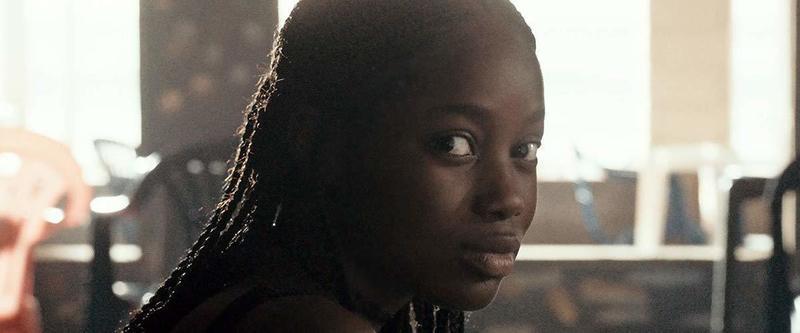
“Atlantics” by Monica Castillo
In watching so many films in a given week, month, or year, it’s rare to find one that sustains its thrills throughout its runtime, matches its gorgeous imagery with a compelling story, and defies easy categorization. Mati Diop’s haunting narrative feature debut “Atlantics” is one such movie. It’s unlike few other movies you’ll see this year or possibly this decade.

“Birds of Passage” by Godfrey Cheshire
When Cristina Gallego and Ciro Guerra’s gripping, brilliantly mounted drama “Birds of Passage” (Spanish title: “Pájaros de Verano”) opens, we could almost be watching an ethnographic documentary. It’s the late 1960s and we’re observing a family from the indigenous Wayúu people in a remote, arid stretch of northern Colombia. A girl named Zaida (Natalia Reyes) has just completed her ritual period of isolation and her people are celebrating her emergence, which symbolizes her readiness for marriage. And that prospect looms up almost immediately with the announcement by Rapayet (José Acosta), a handsome guy from a neighboring family, that he wants her as his wife.

“Booksmart” by Monica Castillo
Olivia Wilde’s electric feature debut, “Booksmart,” is a stellar high school comedy with an A+ cast, a brilliant script loaded with witty dialogue, eye-catching cinematography, swift editing, and a danceable soundtrack. Most importantly, it’s incredibly fun to watch again and again. While paying homage to the teen comedies that have come before it, “Booksmart” sets itself apart with the characters at its center. Molly (Beanie Feldstein), a type-A bookworm obsessed with being the top of her class, and her best friend Amy (Kaitlyn Dever), a quieter if no less driven feminist activist, worked hard to get into good colleges. When Molly finds out that their less studious classmates have also gotten into the same prestigious schools, it shatters her understanding of the world. Instead of enjoying their usual quiet night in, Molly convinces Amy to dress up -– they’re going to party at least once before they walk across that graduation stage.

“Burning Cane” by Matt Fagerholm
Like most children brought up Catholic, my first taste of alcohol was at church. I eagerly awaited each sip of wine, knowing it would help dissolve the tasteless wafer in my mouth. Savoring the flavor of the liquid sacrament, I mistook its warm aftereffect as the enveloping presence of the Holy Spirit. It wasn’t until I saw Phillip Youmans’ extraordinary debut feature, “Burning Cane,” that I began to fully grasp the inherent strangeness of this ritual. Mere thoughts of “forbidden fruit” such as drugs or sex are branded as sins even as they are literally dangled in front of our faces, whether it be in the form of communion or the chiseled body of Christ beckoning to us from the cross (our crucifix depicted Jesus with his hand outstretched to the congregation). How are we expected to achieve a healthy equilibrium of moderation in a patriarchal system of repression and shame? The first film I reviewed for RogerEbert.com was 2015’s hit Evangelical drama “War Room,” where a woman is told by the wise old lady next door that it is her godly duty to remain married to her abusive husband. All the battered wife must do is clean out her closet, close the door and pray away the devil, thus magically transforming her adulterous spouse into a loving partner.
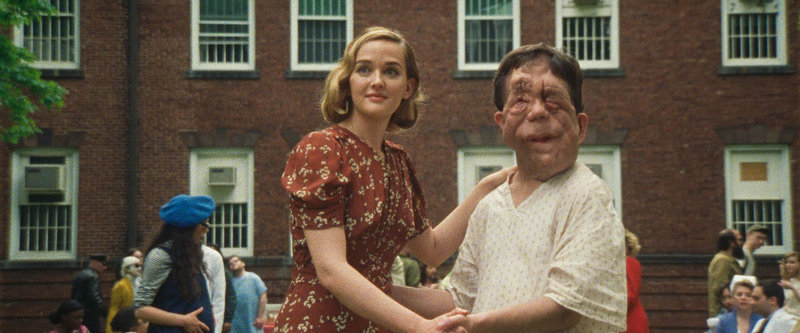
“Chained for Life” by Sheila O’Malley
In her 1968 review of "Funny Girl," Pauline Kael wrote that "one of the great pleasures of moviegoing" is "watching incandescent people up there, more intense and dazzling than people we ordinarily encounter in life, and far more charming than the extraordinary people we encounter, because the ones on the screen are objects of pure contemplation." Joan Crawford stepping into her gorgeously placed key light. Cary Grant entering a room, wearing a grey flannel suit. Marilyn Monroe walking across a room. Fred Astaire and Ginger Rogers floating around a sound stage. Louise Brooks glancing into the camera, eyes glimmering with mischief. Reveling in beauty is part of the pleasure of film.

“The Changeover” by Matt Zoller Seitz
"The Changeover," about a teenage girl trying to save her kid brother after he's captured by a malevolent creature, is a coming-of-age drama, a horror movie, and a "hero's journey" film, rolled into one grandly entertaining package. It's creepy, moving, and ultimately inspirational, and its more disturbing images stick in the mind. It's the kind of movie that could become a sleeper hit if it had marketing muscle behind it, but alas, it doesn't; it's an independent film that's opening this week on a handful of screens in North America after playing Australia and New Zealand months earlier. It's worth seeking out no matter how much trouble you have to go to, because it's special: assured but modest, full of surprises. It doesn't go the way you expect it to, and yet in retrospect each move seems inevitable, like the incremental fulfillment of a prophecy.

“Chinese Portrait” by Scout Tafoya
Wang Xiaoshuai’s latest movie works so splendidly on its own self-contained and easily divined terms you could watch it without knowing anything about the Shanghai-born director and still walk out stunned. Of course, the payoff of this work is all the richer if you know the course the director took from studio misfit beleaguered by distribution and self-esteem problems to well-liked and promising director of "Beijing Bicycle"—the kind of neo-Neo-realism international film festivals still love—to wave-riding miserablist director of scoring studies of casualties of China’s cultural revolution. He leaned more heavily on a depressive longing and woozy inevitability than did, say Jia Zhangke, to name one of the better known directors from the period known as China’s Sixth Generation. Life haunts the characters in his movies, who only realize what they’ve had to live with when looking back at who they were. His characters watch from the outside as tides wash over their existences, precious things are stolen, glories forgotten, potentials smothered. His two latest seem to share nothing but Wang’s sharp eye and melancholy form, but they’re instructive about the kind of cinema with which he’s wrestled all his life.

“Clemency” by Matt Fagerholm
“I am invisible, understand, because people refuse to see me.”
This excerpt from the prologue of Ralph Ellison’s 1952 novel Invisible Man is mentioned during a seemingly inconsequential moment in Chinonye Chukwu’s sophomore feature effort, “Clemency,” yet its essence reverberates through every frame. 2019 has been filled with films about wrongly incarcerated men, from Destin Daniel Cretton’s stirring fact-based drama, “Just Mercy,” to Terrence Malick’s poetic meditation on righteous sacrifice, “A Hidden Life,” but none have gripped me quite like Chukwu’s masterwork. Though it deservedly earned the Grand Jury Prize at Sundance, this picture appears to have evaporated from voters’ memories, which is a crime since its leading lady, Alfre Woodard, is more deserving of Oscar contention than the majority of nominees selected by SAG and the Golden Globes. In many ways, “Clemency” makes a fitting double bill with Ava DuVernay’s equally wrenching Netflix miniseries about the Central Park Five, “When They See Us,” a title echoing Ellison’s aforementioned exploration of how our presumptions blind us to one another’s truth.
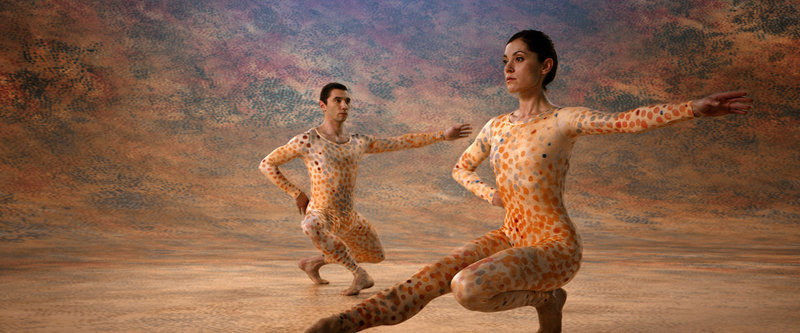
“Cunningham” by Nick Allen
2019 has seen many great documentaries, across the various styles in which to tell a true story. But there’s been nothing quite like Alla Kovgan’s “Cunningham,” an exhilarating testament to documentaries as a boundless form of art. A celebration of New York choreographer Merce Cunningham, the film dreams beyond restrictions many visual storytellers seemingly adhere to. As its narrative tells brief bits about Cunningham's life, and puts his other-worldly dance routines center stage while accompanied by flourishes from 20th century avant-garde music, “Cunningham” honors the tools of filmmaking—sound, action, dialogue—with the harmonious blending of three art forms: music, dance, poetry.

“Deadwood: The Movie” by Brian Tallerico
“All bleeding stops eventually.”
“Deadwood: The Movie,” a project that's been rumored and hoped for over the last decade, finally pulls into the station this Friday, May 31st, amidst revelations that creator David Milch is suffering from Alzheimer’s Disease. Even if one wasn’t aware of the tragic state of the film’s creator, there’s an unexpected poignancy in every frame of “Deadwood,” but the miracle of this production is how deftly Milch and company avoid emotional manipulation as they bring closure to an iconic TV show. Befitting one of the most complex television shows of all time, it's a rich 110 minutes of filmmaking that rewards fans without pandering to them. It is the product of someone who has been living with these characters since the show went off the air in 2006. You get the feeling that he knows everything that’s happened to them since then, and we drop in on their lives now as if they have gone on while we’ve been away. As much as fans have desperately wanted another season or movie before now, there's something so perfect and beautiful about how this movie came out that almost makes one feel like it couldn't have happened any other way.

“The Farewell” by Christy Lemire
“The Farewell” announces at the beginning that it’s “based on an actual lie,” but the meaningful truths it reveals couldn’t be more poignant or powerful. And while writer/director Lulu Wang’s film is obviously personal and culturally specific, it achieves a universality and a resonance through its vivid depiction of a family in the midst of crisis.

“For Sama” by Tomris Laffly
It’s commonly thanks to individuals with insatiable journalistic instincts that the history of families, cities or entire nations gets preserved through visual and written evidence. In the shattering “For Sama”—the most harrowingly intimate and arguably, the best documentary to date on the Syrian conflict—rebel Waad al-Kateab is one such woman born with that restless impulse to document. When she first starts to aimlessly film her country’s ongoing conflict that steadily grows in violence and complexity, al-Kateab is an optimistic, 26-year-old student armed with nothing but a cell phone at Aleppo University, studying to earn a business degree in 2012. This was when her country’s movement was riding the glory of the Arab Spring, with rising protests against the dictatorship of Bashar al-Assad. But as hope gave way to chaos, destruction and crimes against humanity committed by the regime and its allies, options started to thin out; revolution seemed like a distant fantasy. And yet, instead of leaving like many, al-Kateab decided to stay behind and fight for the better future she believed in.
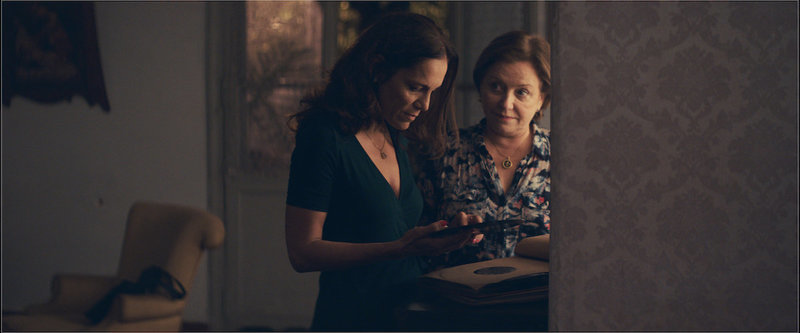
“The Heiresses” by Sheila O’Malley
It’s commonly thanks to individuals with insatiable journalistic instincts that the history of families, cities or entire nations gets preserved through visual and written evidence. In the shattering “For Sama”—the most harrowingly intimate and arguably, the best documentary to date on the Syrian conflict—rebel Waad al-Kateab is one such woman born with that restless impulse to document. When she first starts to aimlessly film her country’s ongoing conflict that steadily grows in violence and complexity, al-Kateab is an optimistic, 26-year-old student armed with nothing but a cell phone at Aleppo University, studying to earn a business degree in 2012. This was when her country’s movement was riding the glory of the Arab Spring, with rising protests against the dictatorship of Bashar al-Assad. But as hope gave way to chaos, destruction and crimes against humanity committed by the regime and its allies, options started to thin out; revolution seemed like a distant fantasy. And yet, instead of leaving like many, al-Kateab decided to stay behind and fight for the better future she believed in.

“A Hidden Life” by Matt Zoller Seitz
Terrence Malick’s “A Hidden Life,” the true story of a World War II conscientious objector, is one of his finest films, and one of his most demanding. It clocks in at nearly three hours, moves in a measured way (you could call the pacing “a stroll"), and requires a level of concentration and openness to philosophical conundrums and random moments that most modern films don’t even bother asking for. It also feels like as much of a career summation as Martin Scorsese’s “The Irishman,” combining stylistic elements from across Malick’s nearly 50-year filmography, somehow channeling both the ghastly humor and rooted in actual scenes (with beginnings and endings) that longtime fans remember from his early classics “Badlands” and “Days of Heaven,” and the whirling, fast-cut, montages-with-voiceover style that he embraced in the latter part of his career. It’s one of the year’s best and most distinctive movies, though sure to be divisive, even alienating for some viewers, in the manner of nearly all Malick’s films to one degree or another.

“High Life” by Matt Zoller Seitz
Claire Denis' "High Life," about a group of prisoners being used as guinea pigs in a deep space mission, is tailor-made for viewers who like science fiction in a cryptic 1970s art-house mode, and don't care if the movie is of-the-period ("The Man Who Fell to Earth," "Alien," "Silent Running") or consciously aping it ("Under the Skin," "Ex Machina," "Annihilation") as long as it delivers the goods by challenging the audience. There are no laser shootouts, lightsabers, spaceship battles, or talks of imperial succession here—just long, often eerily quiet scenes of adults being adults, in a futuristic environment that turns every situation into a metaphor and every metaphor into a situation.

“Homecoming” by Peter Sobczynski
When Beyoncé hit the stage for her two performances at Coachella last year, the audience would have been more than satisfied with a run-through of her greatest hits. Instead, she presented the audience, both in person and streaming at home, with an impossibly ambitious set consisting of big hits and deep cuts that were woven together into an intricately choreographed work of performance art that was unapologetically feminist, and unabashedly steeped in all aspects of African-American culture, especially in its use of the visual iconography of historically black colleges and universities. The show also served as a career summation from one of the biggest names in the contemporary pop cultural firmament.

“Invisible Life” by Tomris Laffly
Lush melodramas are a dying breed, especially masterful ones like Karim Aïnouz’s “Invisible Life” that wear Douglas Sirkian genre conventions on their sleeve proudly and abundantly. From its very first frame, Aïnouz’s vibrant and warm-hued picture—the deserving winner of the Un Certain Regard prize at the 2019 Cannes Film Festival—envelops you within its tropical world of saturated colors and extreme sensations, to then gradually ascend to a heartrending finale, honoring the sisterly bond at its center with an openhanded serving of tears. Adapted from Martha Batalha’s novel (by Murilo Hauser, Inés Bortagaray and Aïnouz), “Invisible Life” is knowingly old-fashioned, relentlessly emotional and deeply moving in its telling of a Rio de Janeiro-set tale that starts in the 1950s and spans across decades through the life trajectory of two sisters cruelly separated in the hands of patriarchal customs.
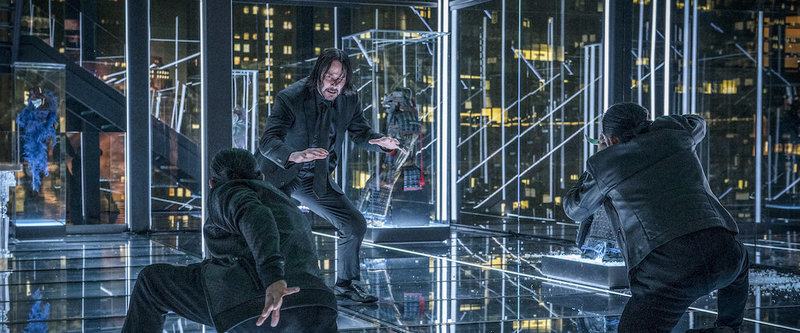
“John Wick: Chapter 3 – Parabellum”
There are any number of thrilling passages in “John Wick: Chapter 3 - Parabellum,” but a moment of true inspiration—when you know that you're in the hands of filmmakers who are intent on creating a work of wit, style, and vision—comes relatively early. Our hero, soulful assassin John Wick (Keanu Reeves), is at the New York Public Library to find a very specific book when he's interrupted by one of the approximately 11 million people who will attempt to kill him over the course of the next two hours of screen time. Eventually John kills him by utilizing the book he's holding as a weapon. That part is great, but the moment of true inspiration comes next when he goes back and replaces the book on the shelf where he found it. This detail works not because it is funny, but because it fits the character so perfectly that it would almost be weird if he didn’t do it. In a genre where impersonality is the name of the game more than ever, it's a delight.
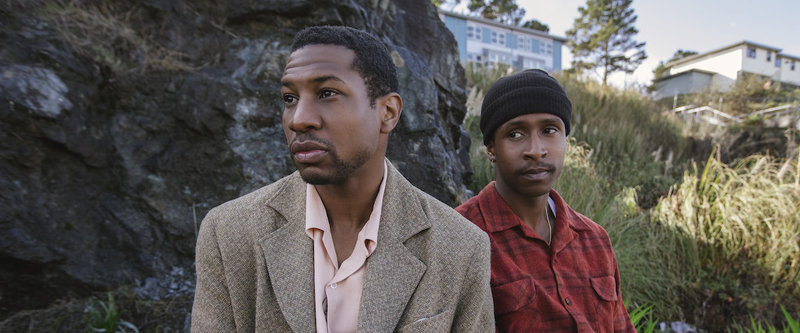
“The Last Black Man in San Francisco” by Odie Henderson
There’s a scene in director Joe Talbot’s Sundance winner “The Last Black Man in San Francisco” that you might not buy if you’ve never spent time in the City by the Bay. One of the film’s protagonists sits in a Muni booth awaiting his bus. He is soon joined by an older gentleman who places some sort of protective barrier on the seat before sitting down. The older man is stark naked. Our hero is completely unfazed by this. The two men briefly commiserate on how the city is changing, invaded by outsiders who simply do not get what it means to those born and bred here; these new folks are recasting a beautiful thing in their own ugly image. This won’t be the first time these opinions are expressed on the Muni, but it’s the only time there’s a naked dude in the conversation.

“Little Women” by Tomris Laffly
“Courage doesn’t grow overnight,” Greta Gerwig told me in an interview at the 2017 Telluride Film Festival, on the heels of the rapturous world premiere of “Lady Bird.” “That first mountain is probably the hardest, but it definitely needs to be crossed,” she added, emphasizing her continued desire to pursue her calling as a director, after finally putting herself out there with a solo effort. How right she was about that calling and how immensely satisfying it is to see her courage take an even more confident shape in a major Hollywood production with scale and scope! A cozy, polished and masterly cinematic rendering of Louisa May Alcott’s immortal 19th-century novel (originally published in two parts in 1868 and 1869), “Little Women” solidifies Gerwig’s one-of-a-kind voice on the page and behind the camera, opening up the classic in a blissful and innovative screen adaptation that feels ageless and vastly of today.
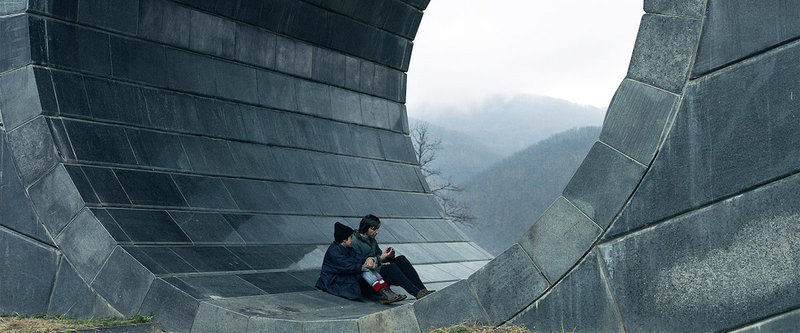
“The Load” by Matt Fagerholm
It’s in the midst of a tense phone call that the dog first catches our eye. A truck driver, Vlada (Leon Lučev), has been tasked with transporting an unidentified shipment from Kosovo to Belgrade during the NATO bombings of 1999. No information is granted to Vlada about the contents he’s carrying, but with his factory job axed and his country thrust into chaos, this gig promises a secure source of income. As he speaks on the phone with his wife (Tamara Krcunović) about some impending medical test results, a stray dog materializes outside the window, racing between the buildings before disappearing around a corner. In an intriguing move, the camera chooses to track the canine’s whereabouts, inviting us to hone in on details that might otherwise be overlooked. When Vlada steps outside, he encounters the dog and finds a sucker embedded in its fur, the remnant of its owner who appears to have vanished, like many residents in the Federal Republic of Yugoslavia.

“Long Day’s Journey into Night” by Simon Abrams
Time moves differently in "Long Day's Journey Into Night," a sensuous, dream-like Chinese drama set in and around the Southeast mainland city of Kaili. The first half of the movie—which only shares a title with Eugene O'Neill's play of the same name—is a disorienting mix of flashbacks and flash-forwards. We follow emotionally withdrawn drifter Hongwu Luo (Jue Huang) as he chases after a woman that he can only vaguely recall. He remembers her in stages: each new place that he revisits—physically and in his memories—brings him closer to her, a woman who may or may not be the enigmatic Kaizhen ("Lust/Caution" star Wei Tang). Or maybe her name is Qiwen Wan, like the movie star. It's hard to tell since time slips through Luo's fingers as easily as the rainwater that darkens Kaili's skies and then seeps into the foundation of almost every building. This is a city—and a mind—that's perpetually on the brink of collapse. How do the locals survive? Why is Luo looking for Kaizhen? What's the point of this story?

“Marriage Story” by Brian Tallerico
Divorce is described in Noah Baumbach’s masterful “Marriage Story” as like a death without a body. Something has been lost. There is grieving, anger, denial. In his personal and moving story, Baumbach captures the insidious nature of divorce, how two well-meaning people who still care about each other will do things they would never think they would do. Surely, you’re not the kind of person who would use secrets as a weapon in a divorce case? You wouldn’t turn a child against a parent to gain an advantage? It’s other people who do stuff like that. With remarkable grace and compassion for his characters, Baumbach portrays divorce as a great equalizer, turning us into versions of ourselves we didn’t expect to become.
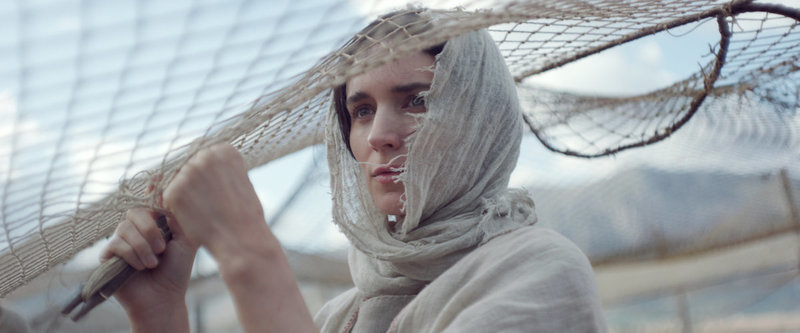
“Mary Magdalene” by Nick Allen
For centuries, the Greatest Story Ever Told had it wrong. Mary Magdalene, one of the most recognizable women in the Gospels, was not a prostitute, but an Apostle just like Peter, Matthew, or Judas. It was Pope Gregory back in 591 who started this misrepresentation, which wasn’t fully addressed by the Vatican until 2016, when they restored Mary back to her place as one of the most important people in Jesus’ circle. That is an extraordinary correction—whether one considers the narrative to be history or just a story—and it is propagated here by an extraordinary film.

“Memory: The Origins of Alien” by Matt Zoller Seitz
"Memory: The Origins of Alien" is one of the best documentaries about a single film that I've seen. It is reductive to call it a "making-of" documentary, because the phrase conjures images of the weakest of those supplements that used to appear on DVDs—the ones where filmmakers and actors sat in chairs in front of a poster for the movie, calling each other geniuses. In contrast, while this movie by Alexandre O. Philippe does go in-depth about how Ridley Scott made the original 1979 sci-fi/horror classic, this is not a collection of fawning, repetitious war stories. It has a complex and rigorously argued set of theses that all come together at the end. And it weaves every detail—whether provided by an on-camera witness, a document, a drawing, a painting or a photograph—around that set of intertwined arguments, which are too complex to explain in this review, but come across powerfully by the time the credits roll.

“Midnight Family” by Matt Zoller Seitz
The night comes alive in "Midnight Family," Luke Lorentzen's film about a private ambulance service in Mexico City. This is one of the great contemporary films about the look and feel of a big city after dark, luxuriating in the vastness of almost-empty avenues lit by buzzing streetlamps. It's a real-life answer to fiction movies like "Taxi Driver," "Bringing Out the Dead," "Collateral," "Nightcrawler" and "The Sweet Smell of Success."

“Midsommar” by Tomris Laffly
One thing is certain: writer/director Ari Aster comprehends stifling dread in the most profound sense. Via a grief-soaked story of ancestral vulnerability (you can’t pick your relatives, can you?), his terrifying and startlingly confident debut “Hereditary” proved as much. Sure, the film’s demonic mythology, skillfully gory images and creepy miniature models cinematographer Pawel Pogorzelski’s camera fiendishly navigated were all stuff of nightmares. But equally frightening in “Hereditary” was the grudge-filled and deeply claustrophobic domestic helplessness Aster infused into every shot and line of dialogue.

“Non-Fiction” by Glenn Kenny
In its opening scenes, “Non-Fiction,” the latest film from writer-director Olivier Assayas, seems like a life-in-these-times picture in the mode of “Summer Hours.” In that 2008 film, a family pondered how to dispose of an artistic legacy left to them by a beloved relative, spurring a lot of smart conversation about the function and utility value of art today. In “Non-Fiction,” the main character, Alain (played with peak middle-aged male foxiness by Guillaume Canet) is an editor at a revered publishing firm trying to figure out how to propagate literature in the digital age. This leads to a lot of pleasant but intense conversating about e-books, blogs, Twitter, all the stuff The Kids are into.

“Once Upon a Time … in Hollywood” by Brian Tallerico
The title of the ninth film by Quentin Tarantino, “Once Upon a Time … in Hollywood,” is meant to recall Sergio Leone’s masterpiece “Once Upon a Time in the West.” It's a nod to the Western genre influence on Tarantino's latest—both structurally and in the actual plot—and the way movies about the Old West play with actual history. Just as the Western has often used real people and places as templates to tell fictional stories, Tarantino has crafted an elegiac ode to a time he’s only experienced through books and movies. Tarantino once said, “When people ask me if I went to film school I tell them, ‘no, I went to films.’” And it’s that education by projector light that weaves its way through every frame of “Once Upon a Time … in Hollywood,” a movie only he could have devised. And yet this is not the film that hardcore fans of “Pulp Fiction” and “Inglourious Basterds” may be expecting. It’s somber at times in the way it seems to be trying to grab something just out of reach—the promised potential of the people on the fringe of the city of angels, an attempt to capture a mythical time when movies, real life, and imagination could intertwine.
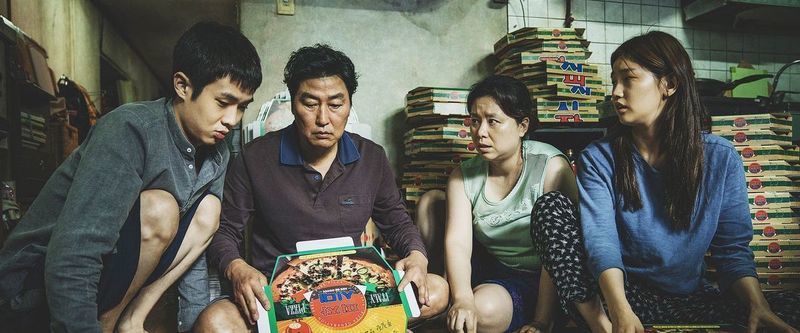
“Parasite” by Brian Tallerico
It’s so clichéd at this point in the critical conversation during the hot take season of festivals to say, “You’ve never seen a movie quite like X.” Such a statement has become overused to such a degree that it’s impossible to be taken seriously, like how too many major new movies are gifted the m-word: masterpiece. So how do critics convey when a film truly is unexpectedly, brilliantly unpredictable in ways that feel revelatory? And what do we do when we see an actual “masterpiece” in this era of critics crying wolf? Especially one with so many twists and turns that the best writing about it will be long after spoiler warnings aren’t needed? I’ll do my best because Bong Joon-ho’s “Parasite” is unquestionably one of the best films of the year. Just trust me on this one.
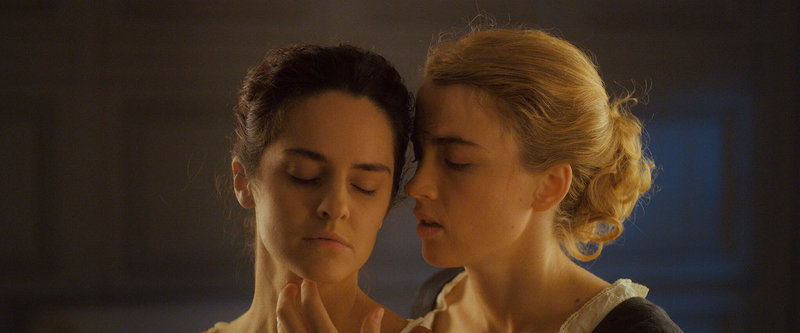
“Portrait of a Lady on Fire” by Tomris Laffly
French writer/director Céline Sciamma has hypnotizing powers—her spellbinding pull was unmissable in both the sensual “Water Lilies” and the gleaming coming-of-age tale “Girlhood.” With “Portrait of a Lady on Fire,” she takes that cinematic magnetism to new heights and periods, to a cliffside manor somewhere on the coast of Brittany in the 1770s. Imbued with a buttery-matte palette and resolute, painterly strokes of camera throughout—lensed by Claire Mathon with patient tenacity—Sciamma’s latest tells the tale of a dreamy romance. It’s a delicate drama that flourishes through the liberating power of art, where a hopeful yet consuming love affair sparks between two young women amid patriarchal customs, and stays concealed in their hearts both because of and in spite of it.

“Share” by Matt Fagerholm
Pippa Bianco’s debut feature, “Share,” based on her own 2015 Cannes prize-winning short of the same name, was greeted with considerable acclaim upon its premiere at this year’s Sundance Film Festival, where it earned two major accolades. Yet like far too many recent, uncompromisingly honest adult dramas, it never received a theatrical release, arriving instead on the small screen. In addition to its signature blend of boundary-pushing shows and mainstream blockbusters, HBO has become as vital a distributor of top-drawer indies as Netflix or Hulu. In contrast with other programming on HBO, including the recently-renewed "Euphoria," with which Bianco is creatively involved, “Share” is a relatively restrained work. Nothing is made explicit aside from the internal agony of its heroine, whose headspace we occupy so fully, we can’t help sharing in every tremulous emotion that ripples across her face.

“The Souvenir” by Monica Castillo
I imagine that Joanna Hogg’s “The Souvenir” plays differently depending on your experience. From its Sundance premiere, I heard grumblings about its main character, Julie (Honor Swinton Byrne), and the frustrations some felt with her decision to stay in a clearly toxic relationship. For me, “The Souvenir” is perhaps the most empathetic movie to capture that kind of bad romance, the way it seeps into every aspect of your life, the way it changes your behavior, how you hold onto the memories of good times when things get rough and how after it ends, you're a changed person.

“Toy Story 4” by Matt Zoller Seitz
"I Can't Let You Throw Yourself Away," sings Randy Newman, Pixar's bard, in a montage from "Toy Story 4." The song's title is aimed at Woody (Tom Hanks), a friend to his original owner, Andy, and later to Bonnie, a five-year old who inherited Andy's toys at the end of "Toy Story 3" and is shown refining her own playtime rituals that don't always include Woody. Secondarily, the song is officially aimed at a new character, Forky (Tony Hale), a plastic spork with popsicle-stick feet and pipe cleaner arms, created by Bonnie with material supplied by Woody during orientation day at kindergarten. Typical of "Toy Story," a series where inanimate objects don't merely have personalities but existential crises, Forky keeps breaking away from Bonnie and Woody and trying to hurl himself into the nearest trash receptacle. This is not a comment on his own feelings of worthiness. but an expression of the fact that Forky is, after all, a utensil, and feels most comfortable in the trash, secure in the knowledge that he fulfilled his purpose.

“Transit” by Brian Tallerico
“Ports are places where stories are told,” a character says in Christian Petzold’s masterful “Transit,” a film that closes out what the director has called his “Love in the Time of Oppressive Systems Trilogy” with “Barbara” and “Phoenix.” At first, the parallels between “Transit” and “Phoenix” are striking. Both films are about identity and betrayal, and this film is based on a novel by Anna Seghers from the era in which “Phoenix” takes place: World War II Europe. As it unfolds and expands, “Transit” starts to echo several other clear inspirations from “Casablanca” to Kafka to even some more modern filmmakers like the Dardennes and Aki Kaurismaki, and yet this is very much a Christian Petzold film, first and foremost. It explores the themes that clearly fascinate him with his confidence of visual language and gift with performers. It is daring, riveting, and the first great movie of 2019.

“Uncut Gems” by Sheila O’Malley
"Everything I do is not going right."
So sobs Howard, the adrenaline-junkie diamond dealer gambling addict played by Adam Sandler in "Uncut Gems." Taking place over the course of a couple of days, "Uncut Gems," directed by Josh and Benny Safdie, hurtles along a narrow track over a yawning abyss, following Howard as he attempts to pay down his huge gambling debts by, of course, placing increasingly risky bets. There's the hope that once he pays it all off, he'll wipe the slate clean, and repair some of the bridges he's burned. But everyone around Howard knows this is a fantasy. His addiction is too entrenched. The dazzle of the "uncut gems" in the title is not a surface shine. It glows at the center of the earth, it burns in Howard's core.

“Us” by Monica Castillo
“Therefore this is what the Lord says: ‘I will bring on them a disaster they cannot escape. Although they cry out to me, I will not listen to them.” - Jeremiah 11:11
In Rodney Ascher’s documentary “Room 237,” four theorists attempt to explain the hidden messages in Stanley Kubrick’s movie “The Shining.” The ideas about what the movie is about range from the possible to the downright bizarre. One theory fixates on the possibility that “The Shining” was Kubrick’s way of confessing he faked the landing on the moon footage, and another obsesses over the details of the hedge maze. The other two see evidence that the 1980 film indirectly references either the genocide of Native Americans or the Holocaust.

“The Wandering Soap Opera” by Simon Abrams
The late Chilean filmmaker Raul Ruiz ("The Mysteries of Lisbon," "Night Across the Street") doesn't make accessible films. I say "doesn't" because "The Wandering Soap Opera"—a surreal black comedy that Ruiz shot over the course of six days in 1990—was only completed after Ruiz's death, by Valeria Sarmiento, Ruiz's editor and widow. Funnily enough: Sarmiento's ongoing project of completing and/or restoring her partner's work (including "The Tango of the Widower," his 1967 debut feature) feels very much of a piece with Ruiz's idiosyncratically surreal sensibility and general interest in the fluidity of language, identity, and memory.

“Waves” by Brian Tallerico
“Waves” could also just as accurately be called “Ripples.” It’s about how a series of compounding very bad decisions can ultimately impact good ones. Trey Edward Shults has written and directed an empathetic commentary on the interconnectivity of human nature—a film filled with great, almost unimaginable pain, but also incredible beauty. And it ultimately feels like a call for kindness and forgiveness. Even after the one-two punch of “Krisha” and “It Comes at Night,” “Waves” is unexpectedly ambitious and confident, the work of a filmmaker in complete control of his talents and using them to challenge himself. This is a deeper and more profound film than your average character drama, a masterpiece that’s hard to walk away from without checking your own grievances and grief. The ripple effect continues.





